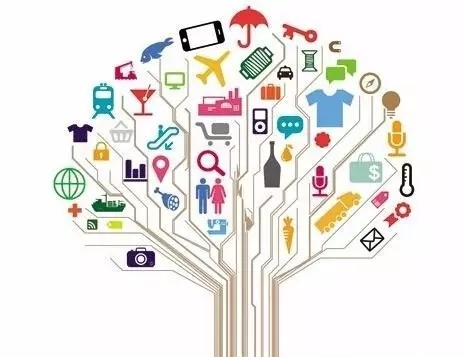Smart home has become a global hotspot. In just a few decades, people's understanding of home has undergone earth-shaking changes. Home automation has been generally accepted. “Smart Home†has become the industry's development goals. In particular, the rapid development of the internet of things technology and the emerging industries of the internet of things has made home intelligence based on the internet of things a trend in the home industry. If the smartphone is a high-tech product and the related patents are very intensive, then the same applies to smart homes. According to the involved devices, smart homes involve more patents. In the future, any type of smart home equipment may carry technology patents. No less than a smart phone. Traditional smart home patent classification In terms of the traditional smart home category, according to the development needs of the industry and the characteristics of patent documents, we can divide the smart home patents in the traditional sense into four parts: intelligent control, residential support, household appliances and other types. Intelligent control patents: Intelligent control is the control system of smart homes, and it is the center of automatic integration control and remote control of home facilities. Specifically, it can be subdivided into patents in the field of 'central control technology, direct-terminal-oriented remote control technology, and network connection technology (ie, "wiring technology") between the terminal and system server. Residential accessory patents : Residential accessory is an important supplement for the full realization of smart home, it provides home control facilities such as lighting control, environmental monitoring and regulation, and energy supply, so that home intelligence can be realized. From the relevant data, patent applications in this area mainly focus on lighting control, smart kitchen, smart bathroom and intelligent heating. Home appliances patents: Home appliances are closely related to people's lives, and smart home appliances are also the first home smart products accepted by people. The various home appliances that involve home life include patent applications that include upgrading and improvement of home appliances and technologies related to remote control of home appliances and network services. Among them, smart air conditioners, smart refrigerators, and smart washing machines are the three most important parts of home appliances, and they are also the areas in which patents are applied the most. Other types of patents: mainly refer to other smart home facilities and product patents that do not belong to the above three categories in the home environment. Domestic and foreign smart home patent application trends Patents have become a key weapon for commercial giants to deploy smart homes, and global patent applications are showing a trend of linear growth. From the perspective of the number of patent applications, the development of global smart home technology has roughly gone through four stages. The first stage (from the 1970s to the mid-1980s) smart home technology is in its infancy At this stage, all countries have no clear definition of smart home technologies. In the true sense, smart home patents have not yet emerged. At this stage, the patent we are referring to basically refers to a small number of applications concerning stand-alone control technology for various household appliances or residential ancillary equipment. The second phase (from the mid-1980s to the mid-1990s) The slow development of smart home technology is still in its infancy With the improvement and development of technology, the networking of smart homes has become a general trend. However, the number of patent applications at this stage is still relatively small, mainly focused on the simple networking technology based on coaxial cable or power line layout smart home, the technology to achieve a simple switch control of home appliances, lights, curtains and so on. The third stage (from the middle of the 1990s to the beginning of the 21st century) smart home technology has a certain degree of development At this stage, simple networking technology can no longer meet the development requirements of smart homes. Based on RS232 or RS485 network technology came into being. Based on this, integrated cabling, building intercom, and access control technologies have been fully developed. Patent applications in the field of smart security and integrated wiring are gradually increasing. Phase 4 (Beginning 21st Century) Smart Home Technology Enters the Outbreak Many companies have invested huge R&D efforts in smart homes and gradually formed a relatively complete industrial chain in the field of smart homes. At the same time, with the rapid development of wireless communication technologies and broadband technologies such as WiFi, ZigBee or Z-Wave, integrated control and intelligent control have become the new directions for the development of smart home technologies. Users can realize smart home applications with smart phones or tablet computers or wearable devices, such as touch, gestures, body motion, or even virtual reality. In addition, governments of all countries have given strong support to smart homes. Smart buildings, smart communities, and smart nation construction have further promoted the continuous upgrading of smart homes. The development of smart homes has gradually become stable and mature. With the in-depth application and continuous development of the Internet of Things technology, people, people, things, things and things will be closely linked. The rise of big data and cloud computing enables a large number of smart home businesses to be hosted and optimized. Personalized choices will be maximized, and the corresponding technical requirements will be very large. It can be predicted that the future patent applications will usher in a stronger round of competition. After the introduction of smart homes in China, it has lagged behind that of foreign countries. However, due to huge market space and government planning support, the potential is huge, especially the development momentum in recent years has attracted particular attention. Comparing the trend of Chinese patent applications and the trend of global patent applications, we can see that Chinese smart home patent applications are similar to global smart home application trends and can be divided into the following stages. In the bud (before 1990) During this period, although foreign patent applications have developed to some extent, in terms of China, people have not really digested the concept of smart homes, and few Chinese applicants have applied for patents in the field of smart homes. At this stage, foreign countries The applicant controls the advanced concepts and core technologies of the smart home. The Chinese application team is still in the learning stage, and the technology development has lagged behind that of foreign countries. The number of applicants' applications is still weak. In this phase, Chinese companies have increased their emphasis on smart homes and have devoted themselves to the introduction and research and development of smart home related technologies. They hope to control the core technologies and form independent product brands and their own independent intellectual property rights. High growth period (2002-2011) During this period, China's smart home has been accepted from the concept, technology research and development to the entire field of technology industrialization. Among them, Chinese companies represented by Haier have established ejiajiajie, Chinese companies represented by 1°CL have established IGRS alliances, and they have actively connected with international home network alliances, eventually making ejiajia and IGRS It has been adopted by the international smart home standards, which has stimulated Chinese companies' initiative in smart home technology. With the vigorous promotion of enterprises and the government's gradual emphasis on the construction of smart communities and smart cities, smart home products are increasingly popularized in high-end communities, and at the same time, ordinary people have a certain degree of awareness of smart homes. TC-3A Series (7"-65") HuiZhou GreenTouch Technology Co.,Ltd , https://www.bbstouch.com
